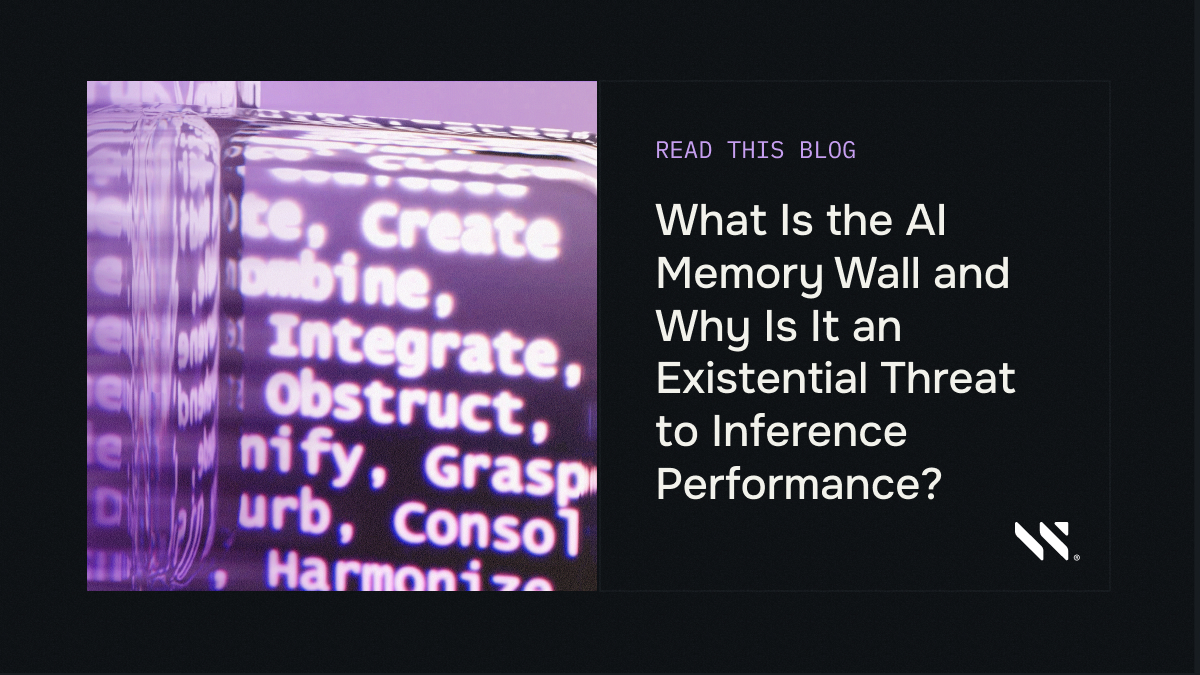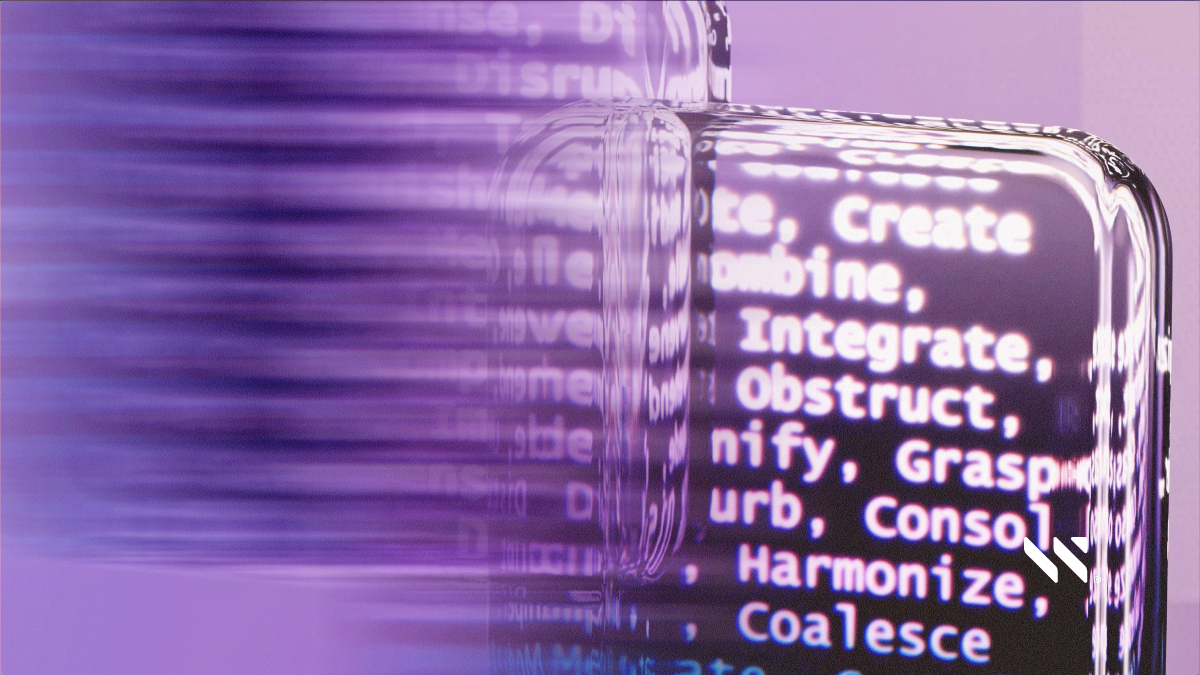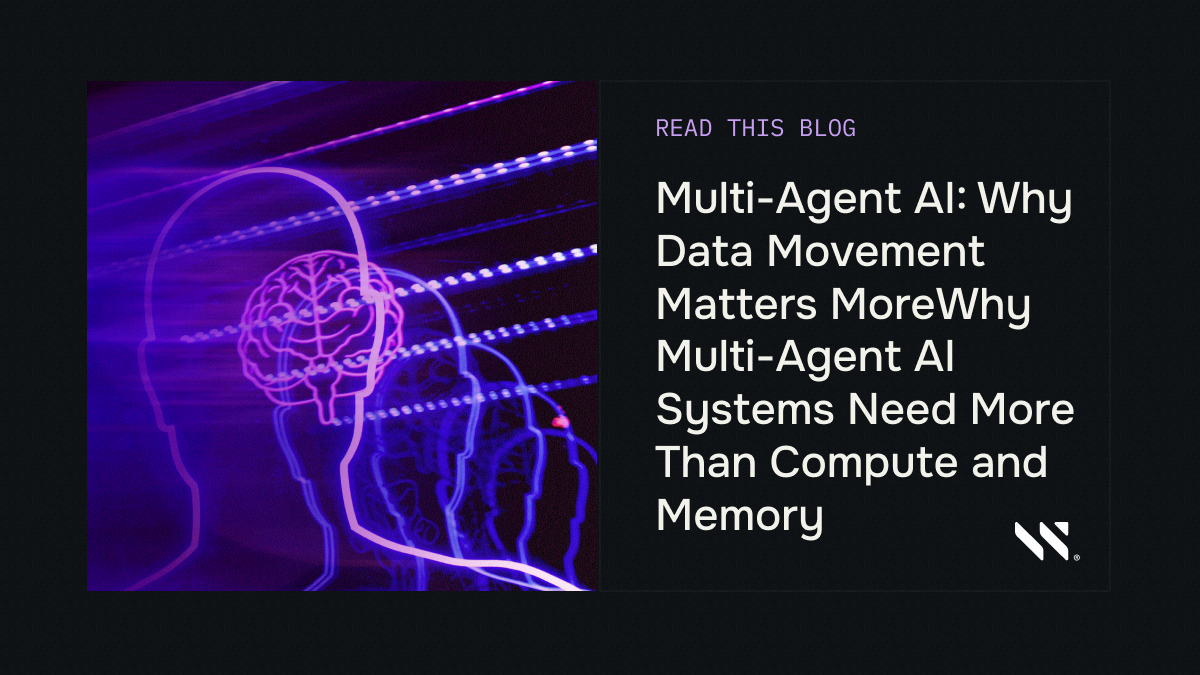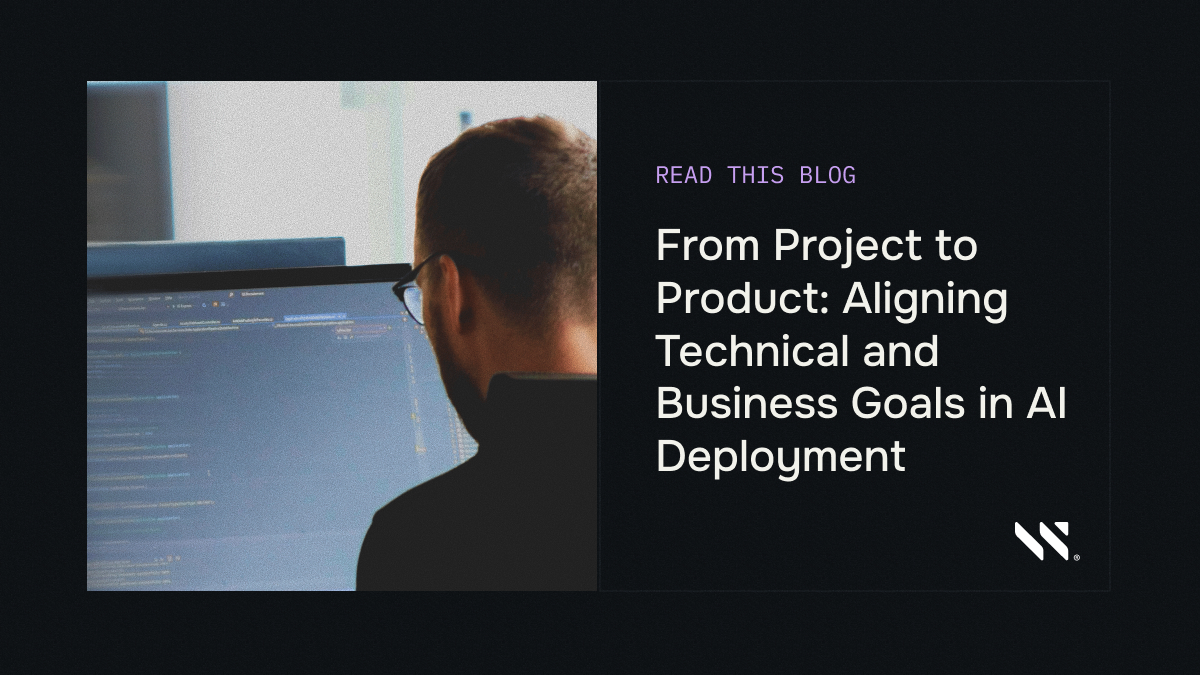What Is the AI Memory Wall and Why Is It an Existential Threat to Inference Performance?


I recently spoke with Matt Marshall, CEO and Editor-in-Chief of VentureBeat, about the memory crisis brewing across the industry as AI quickly shifts from model training to inference.
Given that the topic of AI memory constraints is attracting more and more heat – I’m hearing about it from customers all over the world, too – I think now is a good time to unpack a few of the details and map out what organizations need to do to avoid this potentially insidious issue that can strangle your AI operations and severely impact business profitability.
Context: The evolution toward agentic AI systems and reasoning-based models has revealed a fundamental architectural chokepoint: GPU high-bandwidth memory (HBM) capacity can’t scale to match the persistent context requirements of multi-turn inference workloads. This “memory wall” forces continuous prefill cycles that severely impact both performance latency and computational efficiency.
Below are my thoughts on a few crucial areas to think about for building an AI infrastructure that helps you leap over the dreaded memory wall – with room to spare.
The KV Cache Bottleneck: How Does It Impact AI Model Performance?
Scaling the memory wall requires understanding the limitations – and unlocking the power – of Key-Value (KV) cache.
Modern large-language models (LLMs) utilize transformer-based neural network architectures, which are systems that process sequences by computing attention relationships between all tokens simultaneously rather than sequentially. These models employ attention mechanisms that require KV cache structures to maintain temporal context across token generation sequences. The KV cache stores previously computed concurrent parallel agent contexts, enabling incremental inference without full sequence reprocessing.
Memory requirements scale linearly with context window size. For example, we’ve seen that a 100K-token sequence consumes approximately 50GB of KV cache storage, while leading GPUs provide only 288GB per device. Next-gen AI models like Llama 4 Maverick require 400GB+ for model parameters alone, before accounting for any conversational state. Multi-tenant environments exponentially compound these memory pressures across concurrent request streams. (For a visual look at how agents use context over time from the vital KV cache perspective, check out this post by my colleague Callan Fox).
I’ve seen WEKA’s production telemetry data from various customers, and under current conditions, it reveals KV cache hit rates declining to 50-70% with realistic inference workloads that continue to grow. Systems continuously evict and regenerate cached attention states, expending GPU compute cycles on redundant matrix operations rather than productive token generation.
Engineers behind the globally popular Manus AI Agent confirm “KV-cache hit rate is the single most important metric for a production-stage AI agent”.
Rising Costs of Memory-Bound Inference: How Much Money Are You Wasting?
Memory constraints lead to significant economic inefficiencies across inference infrastructure.
I estimate that GPU cloud deployments allocate up to 80% of their cycles to prefill operations (initial prompt processing) rather than revenue-generating decode phases. Let’s say agentic workloads then incur up to 36% overhead from redundant prefill (recomputation) cycles that consume unnecessary energy, add latency, and reduce quality for reasoning and output tokens. Translation: for a typical 8-hour agent session that costs roughly $80, approximately $29 is spent on wasted compute. Service providers also face margin compression on long-context offerings as operational costs exceed sustainable pricing thresholds.
On the other hand, WEKA Augmented Memory Grid eliminates the prefill bottleneck, allowing your infrastructure to focus its resources on practical, business-driving inference.
WEKA Augmented Memory Grid and NeuralMesh: The Foundation for Token Warehouses
A token warehouse™ is a literal clearing house that holds tokens closer to the resources that need them through hierarchical memory tiering. WEKA Augmented Memory Grid extends KV cache from GPU memory to a token warehouse in NeuralMesh™ by WEKA®, transforming memory into high-performance storage while preserving inference-grade latency. The architecture enables persistent context retention across session boundaries, increasing inference throughput and lowering latency while consuming less energy and improving output token quality.
GPU-direct fabric connectivity via GPUDirect Storage and RDMA transport protocols bypasses bottlenecks, maintaining inference pipeline throughput without GPU stall conditions. The distributed architecture scales KV cache capacity across NVMe flash arrays to petabyte ranges, with intelligent prefetch engines that predict access patterns and proactively stage tensors from storage to GPU memory before they’re requested. This minimizes latency from cache misses by predicting access patterns and staging tensors between memory tiers ahead of inference requests.
Token Warehousing: Strategies That Can Transform AI Economics
Token warehousing fundamentally alters the economic model for AI inference infrastructure across the deployment stack.
Infrastructure operators can rebalance GPU resource allocation from prefill-dominated workloads (80% of cycles) to decode-optimized utilization patterns and see significant improvements in infrastructure ROI metrics. In fact, WEKA set a new bar for inference performance, delivering a 75x improvement in prefill times for long-context prompts, enabling the infrastructure to focus on inferencing much sooner and faster. This architectural shift converts previously idle computational capacity into billable inference throughput.
Token warehouses are a huge boost for organizations using AI for different business purposes:
Platform developers gain design flexibility to implement stateful agent architectures without memory-driven compromises. Persistent context retention eliminates expensive state reconstruction overhead between sessions while enabling multi-step reasoning workflows that exceed single-interaction token limits.
Service providers can implement differentiated pricing tiers based on context persistence SLAs. Cached inference delivery at 75-90% cost reduction creates profitability opportunities through premium tier offerings while maintaining competitive positioning for standard ephemeral workloads.
For massive, exascale enterprise deployments, NeuralMesh Axon™ delivers a GPU-native architecture that achieves more than 90% GPU utilization rates through embedded storage fabric integration, eliminating the need for additional storage infrastructure.
Top Considerations
When it comes to the nuts and bolts of token warehousing, you need to assess your infrastructure across multiple technical dimensions:
Establish Performance Baseline:
- Measure current KV cache hit rates across production inference workloads
- Quantify computational overhead attributable to cache miss penalties
- Establish baseline throughput metrics per GPU accelerator
Validate Infrastructure Requirements:
- Verify GPU-direct connectivity support via GPUDirect Storage or RDMA fabric protocols
- Provision high-performance NVMe storage tiers sized for aggregate KV cache working sets
- Deploy software-defined orchestration for dynamic memory tier management
Optimize Application Architecture:
- Refactor inference pipelines for session-persistent agent interaction patterns
- Implement cache-aware request routing and batching strategies
- Optimize prompt engineering for token efficiency and context window utilization
Why is Memory Infrastructure Critical for the Future of AI?
Agentic workloads represent the dominant inference pattern for next-generation AI systems, with NVIDIA projecting 100x growth in inference computational requirements. Deploying token warehousing with Augmented Memory Grid and NeuralMesh can handle this inevitable surge, transforming the limitations of traditional memory into a competitive differentiator.
Bottom line: Organizations that architect memory persistence as an infrastructure priority, rather than an afterthought, will establish decisive performance and cost advantages as agentic AI becomes the industry-standard deployment model, fundamentally changing AI economics. If this topic interests you, follow me and WEKA on LinkedIn, where we release new content and commentary on the subject. If you’re ready to optimize your AI infrastructure, please contact us.





